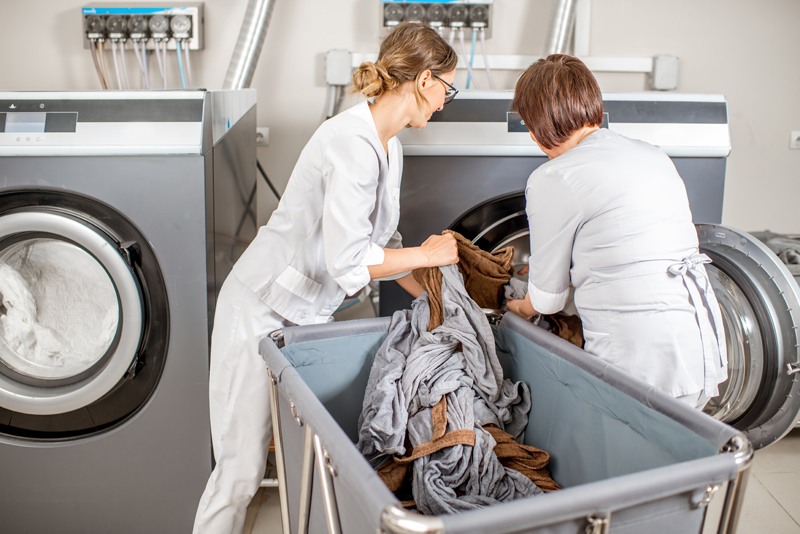Here’s How to Keep Your Employees and Customers Safe – And Your Business Compliant with Today’s OSHA Regulations
[This is the second of a two-part feature on workplace safety in the laundromat. You can read Part 1 here.]
There are some measures that don’t necessarily fall under a specific, written standard or regulation, yet still could be recordable and compensable if someone gets injured:
Ergonomics measures, especially around wash-dry-fold and heavy or repetitive lifting – Although OSHA has failed to pass a comprehensive ergonomics standard addressing musculoskeletal injury prevention measures, the agency still may respond to complaints from workers with documented injuries, such as carpal tunnel or back issues. An evaluation of your employees’ tasks is an easy way to determine any risk.
For example, if your laundromat is located in California, an attendant need only show 1 percent causation to any pre-existing musculoskeletal injury to be compensable under workers’ compensation liability in that state.
First aid/heart-related preparedness – Having an automated external defibrillator in the building and training your attendants on basic first aid/CPR/AED usage is a great effort to show your employees and customers that you care. Typically, an AED can be leased for next to nothing from the same companies that check your fire extinguishers and stock your first aid cabinet – such as Cintas, Aramark or Grainger. It only takes one heart-related incident at your store for that AED to pay for itself many times over.
Cash management/robbery prevention/basic site security – If your employees handle cash or have access to it, you should think hard about the prospect of being robbed. I know that’s not a pleasant thought, but reality favors those who plan for the worst and hope for the best.
Security cameras, security stickers, controlled access and self-locking doors are all effective robbery prevention methods.
Also, if your laundromat is coin-operated, you need to consider how you collect and make your deposits. Is your collection schedule like clockwork, or do you vary it that days and times you collect? Do you use the buddy system or collect alone? How is the lighting outside your store? Beware of any dark, unlit areas. Are you insured for robbery?
If your store is robbed, have you clearly explained to your employees to give the robbers what they want? After all, if you keep a maximum amount of cash on hand, it’s replaceable. And, if you’ve got security cameras, you’ll probably catch the thieves. Above all, you can’t put a price on your employees’ safety.
Once again, good lighting, clean windows and security cameras are a must. Also, remove any cover, such as large bushes or trees, near your entrances, as these are where bad guys like to lurk.
In addition, “No Loitering” and “No Weapons” signage at the entrance can put you in better legal standing if you get some troublemakers; however, it can be perceived as negative messaging – so you need to make that call based on your particular business and market. Of course, you also have the option of carrying a weapon, as well as giving your employees the permission to do so – just be absolutely certain to keep any firearms legal and safe.
Slip, trip and fall prevention – I briefly mentioned this above, but it’s one of the more common sense areas in which you should focus your attention. Plus, besides creating a safer environment for all, great housekeeping, great lighting and consistent repair of floors, sidewalks and your property in general simply attracts more customers.
One last tip: consider providing slip-resistant shoes for your staff. This is quite common in the restaurant and food/beverage industries. In fact, a quality slip-resistant shoe can reduce the chance of injury by as much as 40 percent, even in the most slippery working conditions.
All in all, empower your team to make safety a priority every day – and then help those employees do their best work in the safest way possible.












